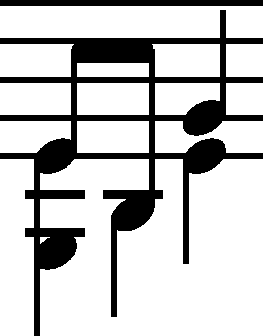



Chopin would gradually shape the notation of the R.H. part in the first half of this bar. Initially, he tried to write down the "harmonic legato" – holding the elements of the chord constituting the figuration with fingers – through rhythmic values:  or
or  . It was still in Atut that the notation was simplified and the notes that were supposed to be held were marked with the legato indication. In the proofreading of FE (→GE,EE), the composer introduced the maximally transparent, two-part notation and changed legato to legatiss.
. It was still in Atut that the notation was simplified and the notes that were supposed to be held were marked with the legato indication. In the proofreading of FE (→GE,EE), the composer introduced the maximally transparent, two-part notation and changed legato to legatiss.
Compare the passage in the sources »
category imprint: Differences between sources; Corrections & alterations
issues: Corrections in A, Authentic corrections of FE
notation: Rhythm


